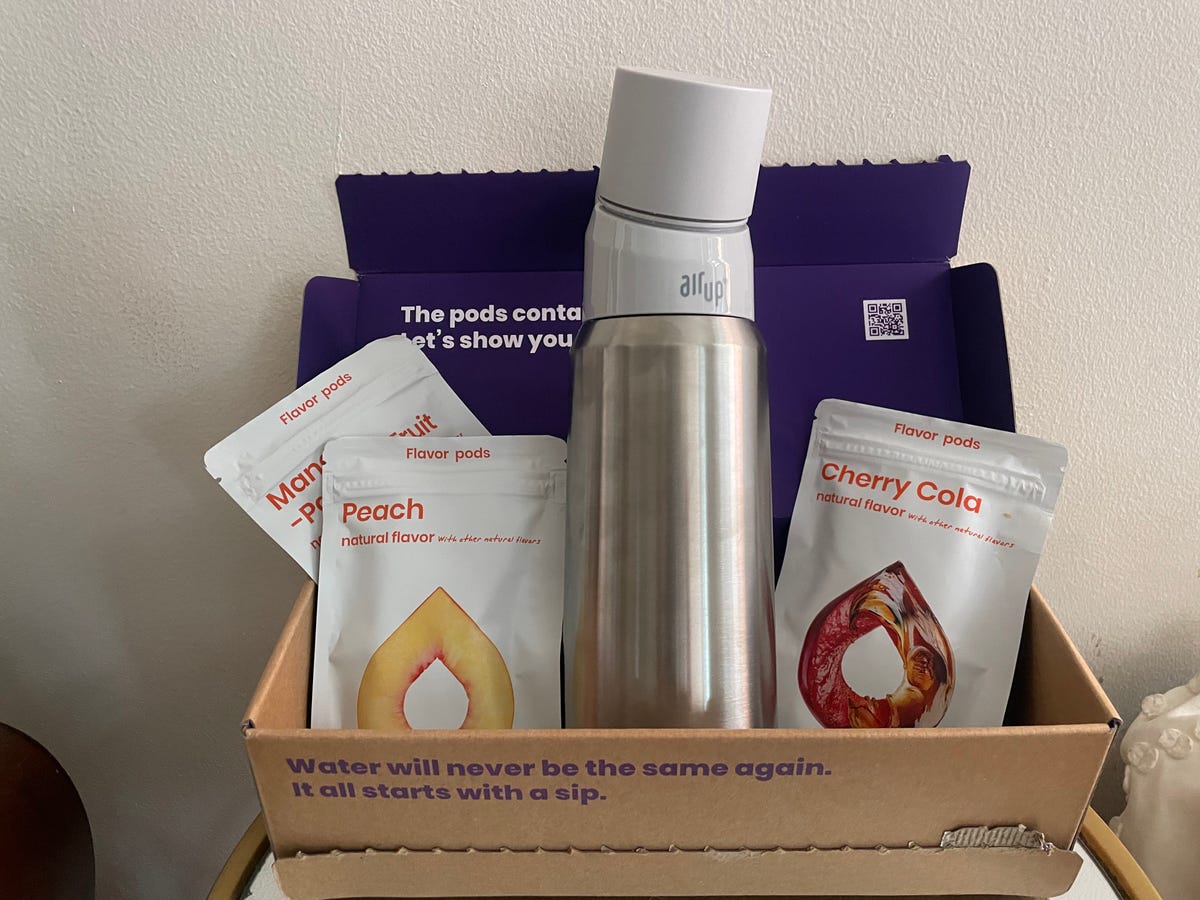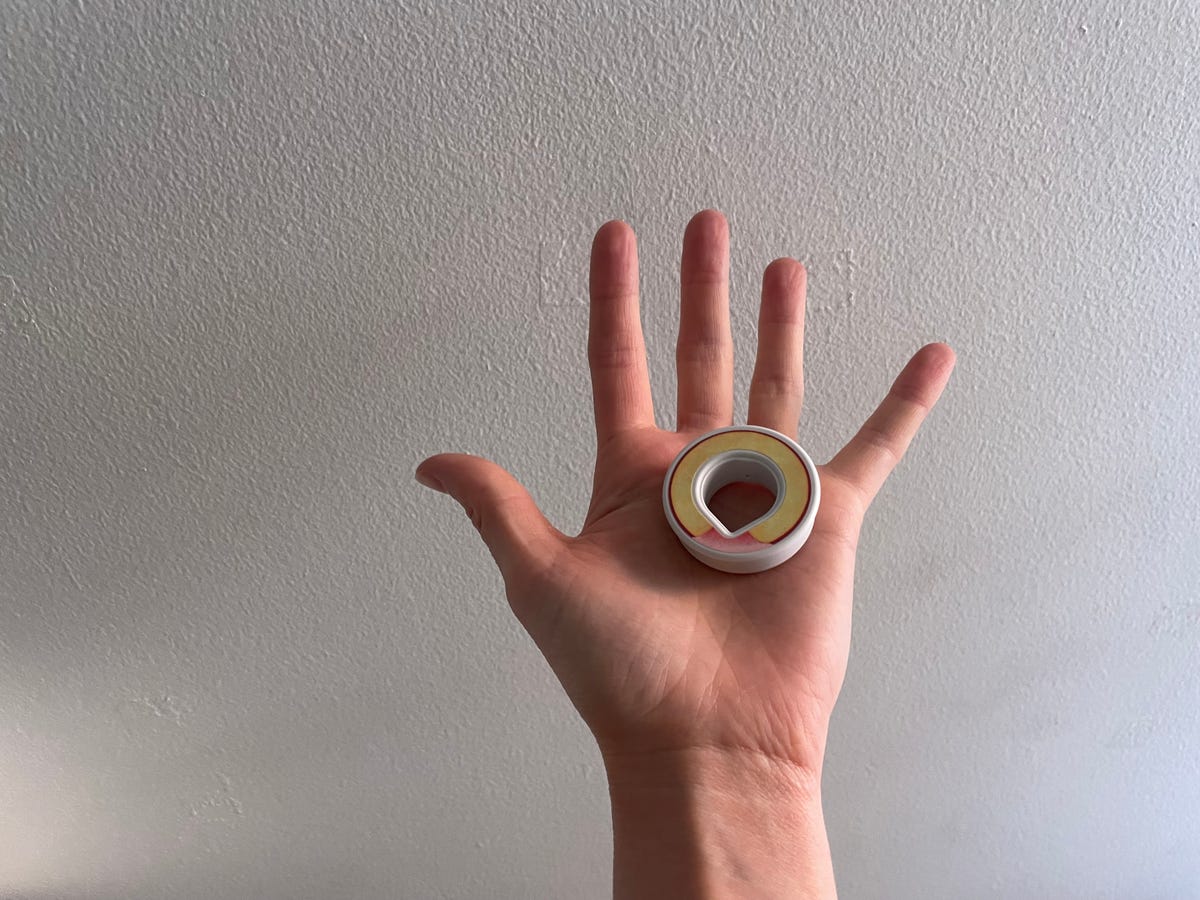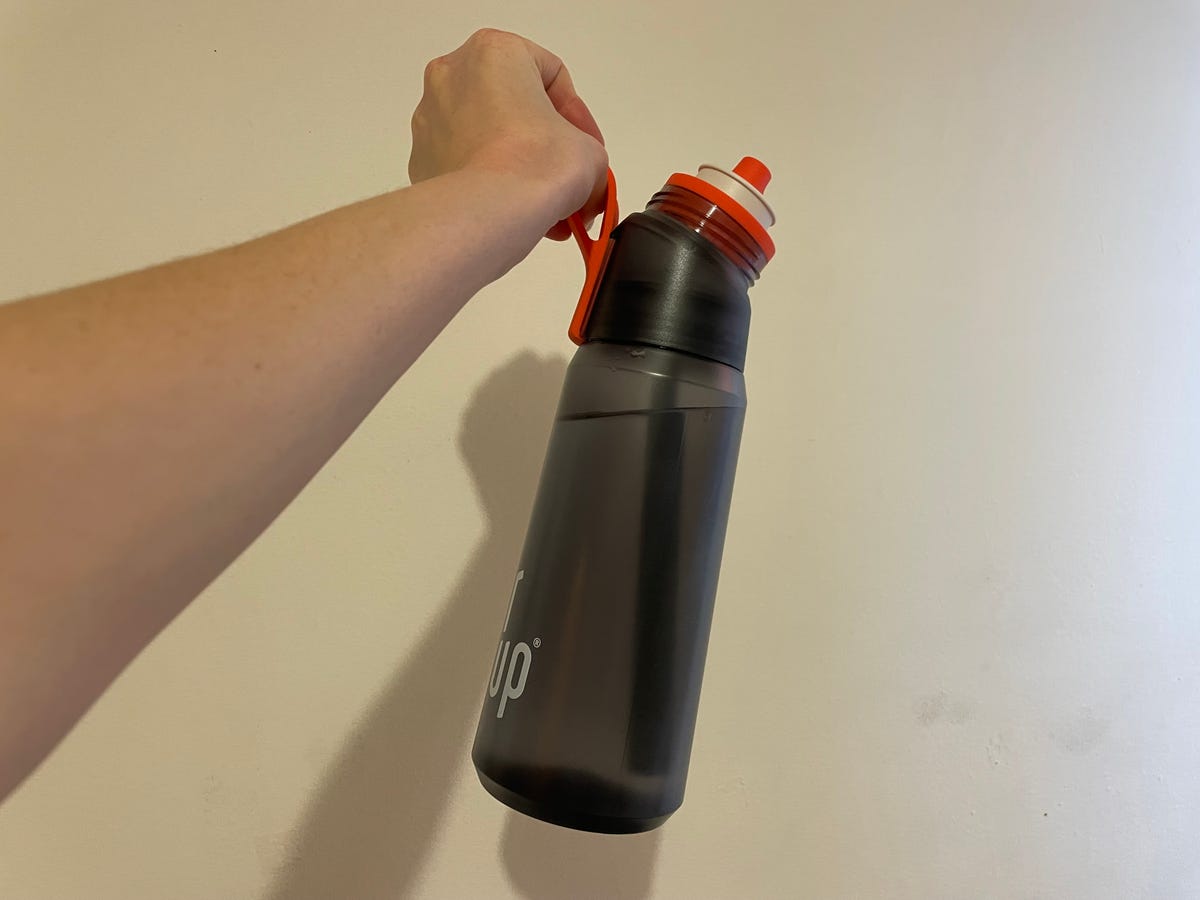Water bottles are no longer just vessels for the health necessity that is H2O — they’ve become a statement piece expressing the latest trends in hydration. Thanks to the popularity of bottles like the Stanley cup, and the reusable water bottles that’ve come before it (Nalgene, Hydro Flask, CamelBak and more) the red carpet has unrolled for a new type of water bottle: the Air Up.
The Air Up is unique in that it’s designed to alter the natural taste of water, but not by flavoring it. Instead, the Air Up activates your sense of taste by adding a scent pod near the nozzle to provide you with a fragrance as you sip your water — a water bottle concept that was born as part of a final project by two German university students. Because smell is so closely linked to our taste (as anyone who’s ever lost their sense of smell will tell you, it can dramatically affect the tasting experience), the Air Up is meant for people who don’t particularly care for the taste of water, are hoping to replace their soda or carbonated beverage with the plain stuff, or who simply are interested in taking a sip of the latest trends coming from the water bottle world.
But concept is different than reality. I tested the Air Up with a selection of its flavor pods to get a taste of what the company is s(m)elling. I also asked my colleague who uses the water bottle what her experience has been like. Here’s what I found.

The Air Up silver stainless steel bottle.
There are different models of the Air Up, including a black stainless steel version and hard plastic ones that come in different colors. Prices for the water bottles start at $32, and you need to add on pods.
Unboxing the Air Up and attaching its parts
I tested a silver stainless steel Air Up that holds 28.7 ounces of water and comes with a green neon-colored straw and nozzle; it currently costs $70 on sale when you purchase it in a bundle that comes with nine fragrance pods. The company has a 28 ounce silver steel bottle and black steel models in 16-ounce and 28-ounce capacities. Air Up also sells hard plastic models made of Tritan that come in fun colors such as hot pink, orange, blue and white. The plastic bottles are sold in 22-ounce sizes. The mouthpiece on all the water bottles is made of silicone. You can also buy different-colored accessories separately.
I also tried the 1 liter charcoal-colored plastic (Tritan) bottle, which is part of the newer Gen2 line and currently available only in some European countries. These bottles are made of 50% recycled materials, are dishwasher safe and are more leak-proof, the company says. The shape of the bottle resembles the shape of the larger steel models available in the US, in that the bottle isn’t slanted or tilted at the top and has a larger top.
The Air Up is pretty intuitive to set up. It arrives in a box, parts unattached, with whatever selection of scented pods your bottle package comes with. The main event during setup is attaching the pod, which is easy, so long as you align the little point of the nozzle with the little point of the pod and securely latch it in. To “activate” the pod and put it into flavored-water mode, gently pull it up until it stops.

The Air Up water bottle with an “activated” pod, from the side. When the pod is pushed down or not activated, the thin gray line isn’t be visible and it’ll also be easier to drink out of the bottle. Drinking with an activated pod results in a slurping sound, but that’s what helps deliver the “flavor.”
How the Air Up works
By way of what the company says is its patented Scentaste technology — attaching a pod with scent around the nozzle of your water bottle — you’re tricking your mind into thinking you’re drinking something flavored. This works because your olfactory sense (smelling) is intimately related to taste; in fact, smell makes up the majority of our perception of taste. (If you need an example of this relationship in reverse, try plugging your nose the next time you eat your favorite food.)
Once your pod is activated or nudged in properly, you’ll drink through the straw like normal, which stirs up air and kicks up flavor through your mouth and nose, giving you the illusion that you’re drinking flavored water, without changing the actual composition of the pure stuff you’re actually drinking.
As long as you’re using Air Up, you’ll need to buy replacement pods, which is probably one of the bigger downsides to this water bottle — it can add up cost-wise.

A flavor or scent pod that fits around the Air Up’s nozzle or mouthpiece. As you’re using your Air Up, you’ll need to keep buying disposable pods, which range in cost from $8 to $13 for a three-pack. The company says one pod should last through 1.3 gallons of water, which equates to about 18 refills of the 28-ounce bottle and 31 refills of the 16-ounce bottle.
The drinking test: My experience with the Air Up
Drinking with the Air Up’s pod activated is a novel experience; that’s for sure. I knew my pod was properly activated when drinking through the straw resulted in slurping sounds — the kind of sound you make when you’re trying to suck the last bits of your drink through a half-busted straw. (Activating the pod is easy, but it took me a minute before I realized I hadn’t followed basic directions and had failed to pull the pod up into “activation” mode. So if you aren’t hearing bubbles or slurps, your pod probably isn’t activated.) Unfortunately, there’s really no way around this sound, because it means the air bubbles are working their magic, stirring up smells in your mouth that prompt you to taste in retronasal olfaction fashion (casually drop that phrase at your next party).
Overall I was surprised by how well the concept worked — injecting “taste” into plain water through smell and straw-sucking alone. It was a similar experience to drinking some sort of artificially sweetened fruit drink. (The company does say its pods are derived from natural ingredients.) I received a handful of different flavors to test (peach, cherry cola, mango-passion fruit, orange-vanilla swirl), and though I liked some better than others, they all gave me a similar artificially and noxiously sweet vibe. So, in terms of smell or “taste” activation, the Air Up works, and I think does pretty much what it claims to do, though I’d still say there’s a difference between “regular” taste and the Air Up taste experience.
Off the bat, I found the flavor pods to be quite strong. In fact, maybe too strong, and I can’t say the Air Up makes for a delicious drinking experience. Probably my least favorite thing about drinking from the Air Up was how the taste-smell experience affected the experience of the food I was eating alongside. I found drinking from the Air Up after eating an egg sandwich, and before taking a bite of sweet potato, pretty off-putting, and borderline nauseating. But that’s strictly my personal experience, as someone who has a sensitive nose and doesn’t care for ultra-sweet flavors like orange-vanilla swirl — plus I have a distaste for artificially sweetened foods and drinks to begin with. And to be fair, the company isn’t making claims of ultra-deliciousness. It’s touting a novel experience that could result in people drinking more water. I’ll also note I did get used to the flavor over time as I became accustomed to drinking from Air Up.
A big note for the straw-lovers out there: The experience of drinking from the Air Up in scent/taste mode is quite different from the regular stream of water you get from a water bottle with a straw. The setup that allows for the pod and bottle to kick in the retronasal action is the same one that results in a less-satisfying stream, so I found myself deactivating the pod to drink just as often as I left it activated. If you want to use the Air Up as a “normal” water bottle without the slurps and taste, you’ll still need to have a pod in place, even if it’s deactivated, which I was a little disappointed to realize.
When you’re done drinking, you screw on the lid. The Air Up’s cleaning process is pretty straightforward, and I found it easy to take the thing apart and put it back together.
Because the Air Up’s appeal and general usefulness depend on your reasons for wanting one in the first place — and it’s best suited to people who want to drink more water or prefer it to be flavored — I asked my colleague Faith Chihil, a social-media producer here at CNET, what she thought of her Air Up. She started using the water bottle after it piqued her interest; she said she’s “always trying new ways to trick myself into drinking more water.”
“I’ve also had hit-or-miss experiences with flavored water drops (trying to figure out the best-tasting ratio; weird fake sugar aftertastes), leaking and spilling, etcetera. So I figured a scent-based product would be neat to try,” Chihil said.
She said it did help her remember to drink more water, at least for the first week. She had a few notes about the water bottle, though. She said it can be annoying to use in quiet environments because of the sounds it makes; the plastic version isn’t insulated; and the cap that screws on is easier to misplace than a lid that flips. She also said that, of the flavors she’s tried, the pods seem to vary in intensity, which I’d agree with.
Some people have reported leaking issues with their Air Up bottle, but I didn’t run into any problems while drinking from the stainless steel bottle, as long as the cap was screwed on properly. I also didn’t notice any leaking issue with the 1 liter Tritan bottle, which is part of the Gen2 line the company says is supposed to be leak proof. This may be due to the build of bottles — if you compare photos of the plastic bottles to the metal ones (silver or black), the top part of the steel bottle is different and similar to the Gen2 line.

A plastic 1 liter Air Up bottle in the charcoal color. The company is selling Gen2 water bottles in Europe.
Who’s the Air Up for?
The Air Up isn’t for people who are expecting this smell-meets-taste experience to be delicious, and it may not be for people who dislike the taste of artificially sweetened things. People who don’t have a particularly strong sense of smell may also not get a lot out of it. Strictly in terms of sustainability, there are better options out there for water bottles, since you’ll need to continue buying pods as long as you’re using the Air Up.
Basically, people who don’t mind the taste of water and/or aren’t interested in finding a way to drink more of it should save their money. There are cheaper water bottles that deliver the (plain) goods.
People who are down to experiment with the latest technology in water bottles, folks who don’t mind spending a little money to spice up their hydration routine, and people who aren’t thrilled by the taste of water may be good candidates for this water bottle.
Jokes aside about the noises the Air Up makes, and the not-for-everyone “taste” of the pods, the company behind the Air Up makes a good point about homing in on the benefits of plain water, and about the benefit of people getting back to the basics instead of opting for the popular carbonated drink or sweetened beverage. Sugary and/or carbonated beverages aren’t great for your teeth and may work away at the enamel (protective coating) over time, as can adding acidic fruits like lemon to beverages all the time.
Also, hydration is the simplest tool we have at our disposal to boost our health and help our body clear out its waste, regulate its temperature and function more smoothly overall. In the pursuit of better health, we can’t yuck whatever is someone’s yum in getting them there.




















+ There are no comments
Add yours